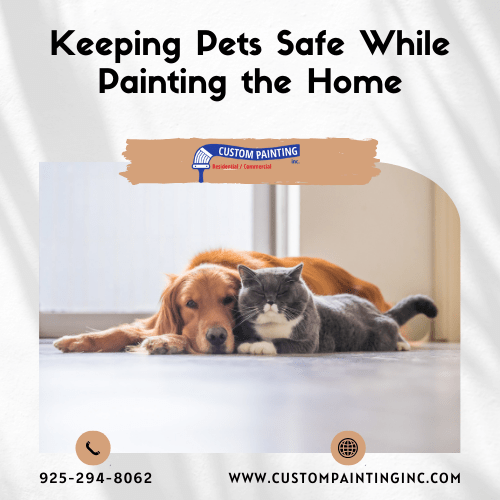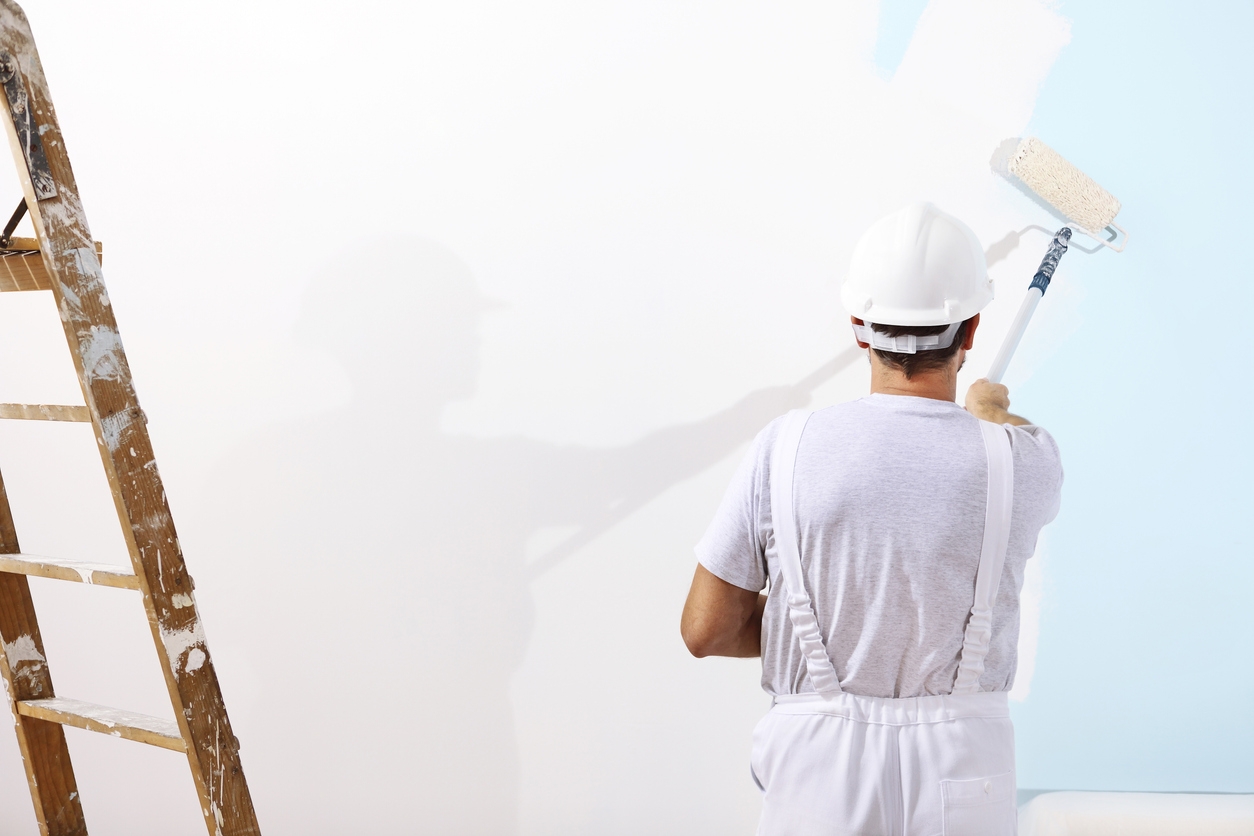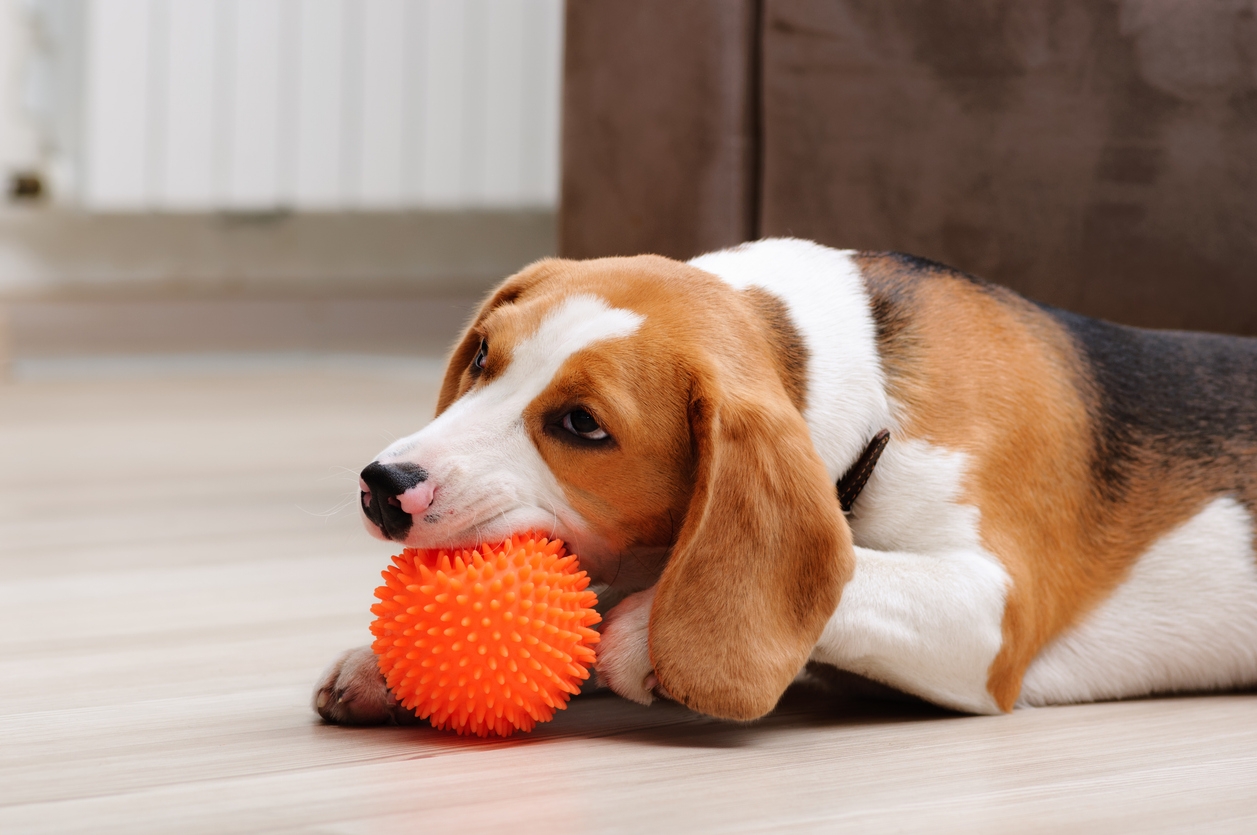Pets are part of your family. If you’re ready to spruce up your home with a fresh coat of paint, take precautions first to keep your furry friends safe during the paint job.
Keeping your pets safe during a home painting project is crucial to protect them from potential hazards. It’s more than preventing them from leaning on wet paint and covering your walls with fur.
Pets face actual risks like exposure to harmful fumes, accidental ingestion of paint or chemicals, and getting caught in paint spills. Planning by keeping pets in a separate, well-ventilated area, using non-toxic paints, and ensuring the workspace is pet-proofed helps ensure a smooth painting process and a safe environment for your cherished furry friends.
Understanding the hazards of painting for pets
When painting around pets, be aware of the following hazards they may face:
- Paint fumes and chemicals: Pets are more sensitive to paint chemicals, such as VOCs (volatile organic compounds), which can cause respiratory issues, eye irritation, or nausea. Low-VOC or pet-friendly paints are safer alternatives.
- Wet paint and curious pets: Pets might unknowingly touch damp paint, leading to ingestion if they lick it off their fur or paws. It can cause digestive issues and potentially severe health risks. Your pets can also spread paint throughout the house.
- Disruption of routine: The noise from painting activities, moving furniture, and changes to familiar spaces can make pets anxious or stressed. Keeping them in a quiet, safe space during the process can help minimize their discomfort.
Preparing the home before painting
When preparing your home for painting while keeping pets safe, take specific precautions to protect their health and ensure a smooth process.
1. Choose pet-friendly paint
Selecting the right paint is crucial to minimizing risks to pets. Low-VOC or zero-VOC paints emit fewer toxic fumes, reducing the chances of respiratory irritation or long-term health issues for pets. These eco-friendly paints are not only better for pets but also for humans, as they help create a safer indoor environment.
2. Create a safe space
Set up a designated, pet-free zone far from the painting area. This can be a comfortable room with your pet’s toys, bedding, food, and water. Consider adding background noise, like a radio or TV, to mask the sounds of the painting process, which can be unsettling for pets. Make sure this room is fully prepared before you begin, as some pets may become anxious from the unfamiliar smells and noises associated with painting.
3. Cover furniture and floors
Ensure all surfaces where pets may roam are covered with plastic sheeting or drop cloths. Pets tend to explore unfamiliar smells and could accidentally brush against wet paint or get into areas they shouldn’t. Covering these areas will not only protect your floors and furniture but will also minimize your pet’s exposure to harmful chemicals or paint splatters.
Additional tips:
- Ventilation: Keep windows open or use fans to ventilate the space well, even if you’re using low-VOC paints. Fresh air will help disperse any remaining fumes.
- Keep pets away from tools: Make sure paint cans, brushes, and tools are stored safely and out of reach to prevent curious pets from accidental exposure or ingestion of toxic materials.
- Timing: If possible, try to paint when you can have your pets stay with a friend, family member, or pet sitter. Doing so will minimize the stress on your pets and give you more freedom to move about your home.
Minimizing exposure to paint fumes
Minimizing exposure to paint fumes is crucial for the safety of pets, as they are more sensitive to airborne toxins. Here are steps to ensure a safe environment for pets during painting projects:
1. Ventilation is key
- Open windows and doors: Ensure maximum airflow by keeping all windows and doors in the painted area open.
- Use fans strategically: Place fans near windows or doors to help push fumes out and draw in fresh air, ensuring the fumes dissipate quickly.
- Use cross-ventilation: Set up fans on opposite sides of the space to promote continuous airflow and reduce the concentration of fumes.
2. Use air purifiers
- Choose HEPA filters: Air purifiers with HEPA filters can capture fine particles from paint fumes. Ensure the air purifier can handle chemical VOCs (volatile organic compounds) found in paint.
- Run purifiers continuously: Operate the air purifiers in and around the painted area while painting and for a few days after to further reduce airborne toxins.
3. Keep pets out of the area
- Create barriers: Ensure pets are physically separated from the painting zone by closing doors or using pet gates.
- Relocate pets: If possible, consider relocating pets to a separate part of the house or even to a friend’s home or boarding facility while painting.
- Wait for full drying and airing out: Paint fumes can linger even after the surface feels dry. It’s essential to wait until both the fumes have cleared and the paint has fully cured before allowing pets back into the room.
Monitoring pets for signs of distress
While painting your home, monitor pets for signs of distress that may result from exposure to paint fumes or chemicals. Common symptoms include coughing, sneezing, watery eyes, vomiting, lethargy, and difficulty breathing. If your pet exhibits any of these signs, remove them from the painted area immediately.
If the symptoms persist or your pet accidentally ingests paint, contact a veterinarian right away for guidance and treatment. It’s crucial to act quickly to prevent further complications from exposure to potentially harmful substances.
Tips for safe pet management during a painting project
Here are additional tips for safe pet management during a painting project:
- Use pet-safe paints: Choose low-VOC or pet-safe paints to minimize harmful fumes. These paints reduce pet exposure to toxic chemicals, ensuring better air quality during the project.
- Ventilation is key: Keep the painting area well-ventilated. Open windows and use fans to help disperse fumes, making it safer for pets and reducing any lingering odors.
- Cover or move pet supplies: Move or cover your pet’s bedding, toys, food, and water bowls to protect them from paint splatters or accidental contamination.
- Monitor pets closely: Keep an eye on pets during breaks or at the end of the day. Curious pets may try to lick, sniff, or touch wet paint, so monitoring them can prevent accidental exposure.
- Create a calming space: Set up a quiet, familiar space away from the painting area where pets can relax. Add their favorite blankets or toys to make it a soothing environment.
These strategies will help keep pets safe and comfortable while you tackle your painting project.
Post-painting precautions
- Allow sufficient drying time: Wait at least 24 to 48 hours before allowing pets back into freshly painted areas. Doing so ensures the paint is fully dry and any lingering fumes have dissipated, reducing potential harm to pets.
- Inspect for wet spots: Before reintroducing pets, carefully check for any remaining wet paint spots, particularly in corners or less-ventilated areas. Pets could ingest or touch wet paint, which can be harmful.
- Clean up properly: Remove all painting supplies, such as brushes and paint containers, from accessible areas to prevent pets from chewing or ingesting toxic substances.
Choosing a professional residential painter for pet safety
When choosing a professional residential painter with pet safety in mind, consider the following:
- Experience with pet-friendly environments: Look for painters with a history of working in homes with pets. Their understanding of necessary precautions can help create a safer environment for your furry friends.
- Use of safe, pet-friendly products: Professional painters can recommend and utilize paints that are low in volatile organic compounds (VOCs) and free from harmful chemicals, minimizing your pets’ exposure to toxic substances during and after the painting process.
- Efficient process to minimize disruption: Hiring experienced painters means the job will be completed more quickly and efficiently, reducing the time your pets need to be kept away from their normal routines. This ultimately leads to a less stressful experience for everyone involved.
Conclusion
When painting a home with pets, it’s crucial to prioritize planning and precautions. Minimize their exposure to fumes, keep them out of painted areas, and provide a safe space during the project. Homeowners should always consider their pets’ safety to prevent accidents or health issues.
For those looking to ensure a worry-free painting experience, consider consulting with our experts from Custom Painting, Inc. for pet-safe painting services. Call us at 925-866-9610 or message us on our contact page. Our skilled, licensed, and insured residential painters have the expertise to create a safe and efficient process for homeowners and their furry friends.




